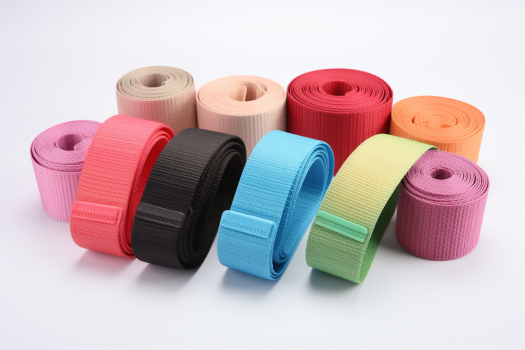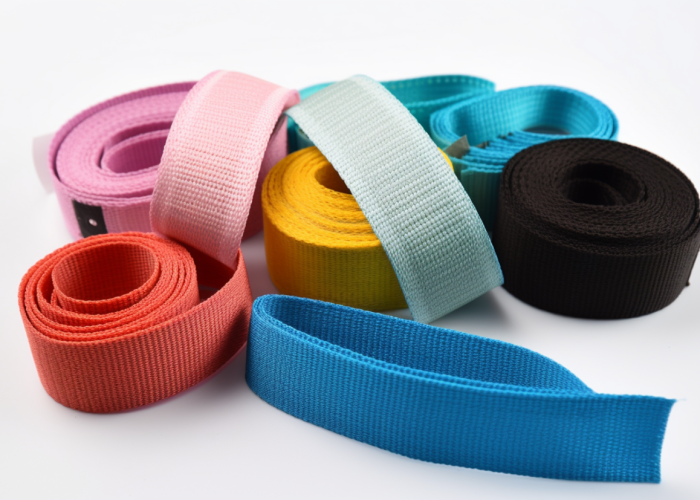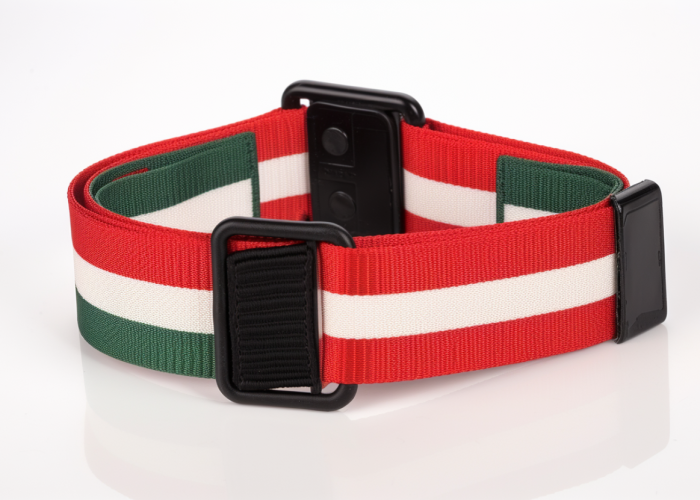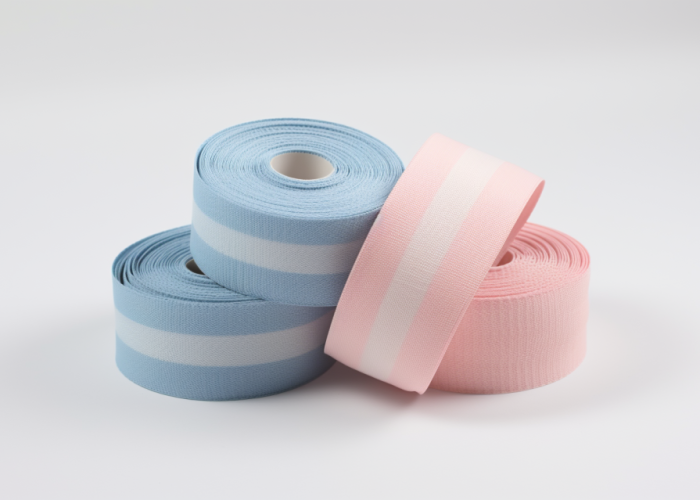Medical device manufacturers need precise color options that comply with industry standards. Our engineering consultation helps product developers select optimal materials for healthcare applications, ensuring devices meet both functional requirements and brand aesthetics.
Yes, specific colors can be chosen for medical webbing with FDA-compliant colorants that ensure consistency across production batches. Beyond standard white, blue, gray, and black options, specialized manufacturing techniques position colorants inside the fiber—optimal for medical applications requiring color stability and safety compliance.
Explore customization options for medical-grade webbing, including widths, coatings, and antimicrobial treatments tailored to your healthcare device needs.


Webbing manufacturing expert with 15+ years of experience helping product developers build high-performance straps for industrial, medical, and outdoor use.
Standard white, blue, gray, and black medical webbing colors are readily available, with custom color matching options produced using colorants conforming to FDA 21 CFR parts 73 and 74 regulations for indirect patient contact. The manufacturing process positions colorants completely inside the fiber rather than surface-level application, creating optimal color stability for medical applications while maintaining regulatory compliance.
Key Points:
The type of solvent used significantly impacts color matching results for medical webbing. Solution-dyed polyester webbing embeds pigments during extrusion, ensuring deep color penetration and 98% color retention after 20+ sterilization cycles—critical for pediatric devices, diagnostic equipment, and implantable components. All colors undergo rub fastness testing per AATCC 8 (dry) and AATCC 61 (wet) to verify non-transfer performance during clinical use.
FDA-compliant colorants ensure all materials meet regulatory requirements for patient contact. These specialized colorants maintain batch-to-batch consistency with color variance under 0.5%, preserving brand identity across production runs and ensuring visual uniformity in finished medical devices. The customization process typically begins with a color matching consultation, followed by sample production within 7-10 business days.
For custom colors beyond standard options, specialized manufacturing processes add only small quantities (2-5%) of colorant to maintain structural integrity. This precise control ensures that color customization doesn’t compromise performance characteristics while meeting ISO 10993-5 compatibility requirements for skin-contact applications.
Specialized finishing techniques for protective pigmenting with low stripping percentages ensure color fastness under demanding healthcare conditions including frequent cleaning and sterilization procedures, maintaining color integrity throughout the product lifecycle while meeting applicable healthcare standards.
Medical webbing is available in standard widths ranging from 3/8″ to 4″, with custom options available from as narrow as 1/8″ to as wide as 12″ to accommodate specific healthcare device requirements. These precision-manufactured width options enable optimal integration into diverse medical applications while maintaining consistent performance characteristics.
Key Points:
Width selection significantly impacts medical device functionality, with narrower webbing (3/8″ to 1″) typically used in applications requiring flexibility and patient comfort such as monitoring straps, catheter securement, and lightweight positioning aids. Mid-range widths (1″ to 2″) provide balanced performance for general medical applications including stretchers, mobility aids, and patient transfer devices where moderate load distribution is necessary.
Wider medical webbing (2″ to 4″) delivers superior load distribution and support for applications such as patient lifting systems, bariatric equipment, and reinforced medical furniture. For specialized applications requiring non-standard dimensions, custom width manufacturing capabilities allow for precise specifications that optimize both form and function while addressing unique design challenges.
The manufacturing process ensures consistent width dimensions throughout production runs, maintaining tolerances of ±0.02″ to guarantee proper fit and function in precision medical devices. This dimensional stability is critical for applications with tight integration requirements or automated assembly processes where component consistency directly impacts device performance and reliability.
Engineering consultation during the design phase helps identify optimal width specifications based on application requirements, load characteristics, and integration considerations. This collaborative approach often reveals opportunities for design optimization that improve both device performance and manufacturing efficiency.

Medical webbing thickness ranges from 0.02″ to 0.09″ in standard manufacturing, with custom options available to meet specific performance requirements that directly impact comfort, flexibility, and load-bearing capacity in healthcare applications. The precise control of thickness dimensions ensures consistent performance characteristics critical for medical device reliability.
Key Points:
Thinner webbing (0.02″ to 0.04″) provides maximum flexibility and conformability, making it ideal for direct patient contact applications such as restraints, monitoring equipment attachments, and diagnostic device components. These lightweight options minimize pressure points while maintaining necessary tensile strength, supporting patient comfort during extended wear periods.
Medium-thickness webbing (0.04″ to 0.07″) balances flexibility with enhanced load-bearing capacity for applications such as transfer slings, mobility aids, and equipment mounting. This range offers optimal performance for applications requiring moderate strength while maintaining a low profile and reasonable flexibility for patient interaction.
Thicker options (0.07″ to 0.09″) provide maximum durability and load distribution for heavy-duty medical applications including bariatric support equipment, rehabilitation devices, and structural components. These heavier constructions deliver superior abrasion resistance and dimensional stability under sustained loading conditions typical in institutional healthcare environments.
Padding options ranging from 0.06″ to 0.15″ thick enhance patient comfort through cushioning effects, with multiple density options available to address specific pressure distribution requirements. Rigid stability mats offer additional benefits in terms of resistance to deformation or compression, maintaining structural integrity even under challenging clinical conditions.
Multi-functional core layers can be incorporated into custom thickness designs, providing high-density raw cushioning referred to as hard foil of soft density components. These specialized constructions deliver targeted performance characteristics that address specific medical device requirements through engineered material composition.
Specialized antimicrobial and antibacterial surface treatments for medical webbing inhibit microorganism growth with EPA-registered additives that maintain effectiveness through multiple cleaning cycles while meeting ISO 10993 biocompatibility standards. These treatments provide critical infection control benefits in healthcare environments without compromising material performance or patient safety.
Key Points:
Antimicrobial surface treatments create specialized finishes that inhibit microorganism proliferation on webbing surfaces, reducing bioburden in healthcare settings where infection control is paramount. These treatments are particularly valuable for applications with frequent patient contact or in high-risk environments such as operating rooms, isolation units, and long-term care facilities.
UV-blocking and antibacterial coatings combine chemical additives that both absorb or reflect light and provide antimicrobial protection. This dual functionality makes these treatments ideal for medical devices exposed to both environmental factors and biological contaminants, extending product lifespan while enhancing safety profiles in clinical applications.
Anti-static and soil release additives provide specialized treatments for areas where dirt accumulation and static electricity present operational challenges. These treatments reduce particulate attraction and facilitate easier cleaning, maintaining aesthetic appearance and functional performance throughout extended use cycles in healthcare environments.
Efficacy testing demonstrates significant reduction in microbial populations, with treated webbing showing 99.9% reduction in common healthcare-associated pathogens including MRSA, E. coli, and Candida albicans. This performance maintains consistency through repeated cleaning and disinfection procedures, providing lasting protection throughout the product lifecycle.
All antimicrobial treatments undergo rigorous compatibility testing to ensure they maintain the webbing’s mechanical properties while meeting biocompatibility requirements for their intended use. This comprehensive evaluation ensures that enhanced infection control doesn’t come at the expense of material performance or patient safety.

Medical-grade webbing can incorporate critical safety treatments including flame retardants meeting NFPA 701 standards, anti-static properties with surface resistivity below 10^9 ohms, and oil/humidity resistance for extreme healthcare environments. These specialized treatments enhance safety profiles while maintaining compatibility with medical device requirements.
Key Points:
Flame retardant treatments are processed with fire-retardant chemicals that meet NFPA 701 standards, critical for safety in healthcare settings where electrical equipment, oxygen-enriched environments, and vulnerable patients create elevated fire risks. These treatments maintain effectiveness throughout the product lifecycle while preserving the mechanical properties and flexibility of the webbing material.
Anti-static treatments for healthcare settings reduce the accumulation of static electricity that could potentially damage sensitive electronic equipment or create spark hazards in oxygen-rich environments. These specialized surface modifications maintain surface resistivity below 10^9 ohms while remaining non-irritating to patient skin during direct contact applications.
Oil-resistant and humidity-resistant coatings protect webbing in areas where oxygen is pumped and high humidity is present, preventing degradation that could compromise structural integrity. These specialized treatments maintain performance characteristics even in challenging environmental conditions, ensuring reliable operation in critical care applications.
UV protection treatments prevent degradation caused by exposure to ultraviolet light, maintaining at least 95% of original tensile strength after 1,000 hours of accelerated UV exposure. This performance is essential for medical devices used in environments with significant natural light exposure or those subjected to UV sterilization procedures.
All safety-enhancing treatments undergo comprehensive testing to verify they maintain compliance with ISO 10993 biocompatibility standards while delivering their protective functions. This ensures that safety enhancements don’t introduce new risks through material interactions or degradation products in clinical applications.
Cushioned medical webbing incorporates padded elements ranging from 0.06″ to 0.15″ thick with varying density profiles to distribute pressure, reduce friction, and enhance overall patient comfort in direct-contact healthcare applications. These specialized constructions deliver improved patient experiences without compromising functional performance or safety requirements.
Key Points:
Ultrathin cushioning mats provide subtle comfort enhancement while maintaining a low profile for applications where space constraints are significant. These options add minimal bulk while still delivering measurable improvements in pressure distribution and patient comfort, making them ideal for diagnostic equipment straps, monitoring devices, and similar applications.
Medium-thickness cushioning (0.06″ to 0.10″) delivers noticeable comfort improvement while maintaining reasonable flexibility and conformability. This range is particularly effective for applications with extended patient contact such as positioning straps, mobility aid components, and restraint systems where comfort directly impacts patient compliance and satisfaction.
Thicker cushioning options (0.10″ to 0.15″) provide maximum pressure distribution and comfort for applications involving significant load-bearing or prolonged patient contact. These constructions excel in bariatric support equipment, transfer devices, and specialized rehabilitation equipment where patient comfort is a primary design consideration.
Rigid stability mats offer additional benefits by combining cushioning with structural support, preventing compression and maintaining consistent performance even under sustained loading. This balance of comfort and stability is particularly valuable in orthopedic applications and specialized therapy equipment where controlled support is as important as patient comfort.
Multi-functional core layers with high-density cushioning provide targeted performance characteristics that address specific medical requirements. These engineered constructions can incorporate zones of varying density and thickness to optimize pressure distribution based on anatomical considerations and application-specific needs.

Medical webbing durability can be significantly enhanced through specialized treatments including high-tensile fiber processing that increases strength by 30-40%, water-resistant coatings maintaining 95% strength when wet, and abrasion-resistant finishes extending service life by 200-300%. These treatments ensure reliable performance throughout extended product lifecycles in demanding healthcare environments.
Key Points:
High-tensile and water-resistant treatments utilize specially processed fibers that undergo advanced chemical and physical coating processes to enhance their mechanical properties. These treatments create webbing that maintains structural integrity even when exposed to moisture, cleaning solutions, and mechanical stress common in healthcare applications.
Abrasion resistance treatments significantly extend service life by protecting fibers from mechanical wear at contact points and high-friction areas. This enhanced durability is particularly valuable in applications with moving components, repeated manipulation, or frequent patient transfers where webbing experiences substantial mechanical interaction during normal use.
Chemical durability enhancements protect against degradation caused by exposure to cleaning agents, disinfectants, and bodily fluids commonly encountered in healthcare environments. These treatments preserve both mechanical properties and appearance throughout hundreds of cleaning cycles, maintaining both functionality and aesthetic quality.
Environmental stability across typical healthcare conditions ensures consistent performance regardless of temperature, humidity, and exposure to common environmental stressors. This reliability is essential for medical devices deployed across diverse healthcare settings from climate-controlled operating rooms to varied home care environments.
All durability treatments maintain compatibility with medical device requirements including flexibility, weight constraints, and biocompatibility standards. This ensures that enhanced longevity doesn’t come at the expense of other critical performance characteristics or patient safety considerations.
Medical webbing customization offers product developers precise control over colors, dimensions, and functional treatments to meet specific healthcare application requirements. From FDA-compliant colorants to antimicrobial coatings and durability enhancements, these engineered solutions improve both performance and patient experience. Contact us to explore manufacturing solutions tailored to your medical webbing requirements.
Custom-colored medical webbing is available with minimum orders starting at 1000 yards. This accessibility allows product developers to obtain precisely matched colors for both prototype development and full production runs without excessive inventory requirements.
Yes, all colored medical webbing undergoes ISO 10993-5 cytotoxicity testing and meets FDA 21 CFR parts 73/74 regulations for patient contact. These comprehensive tests ensure that colorants won’t cause adverse reactions when used in healthcare applications requiring direct or indirect patient contact.
Custom medical webbing samples can typically be produced within 7-10 business days after color matching approval. This expedited timeline allows for faster prototype development and testing compared to the industry standard of 3-4 weeks for specialized medical materials.
Custom medical webbing maintains width tolerances of ±0.02 inches across all production runs. This precision ensures consistent performance in medical devices with tight integration requirements or automated assembly processes where dimensional stability is critical.
EPA-registered silver ion and quaternary ammonium compound treatments provide the most effective antimicrobial protection for high-touch medical webbing. These treatments demonstrate 99.9% efficacy against common healthcare-associated pathogens including MRSA and maintain effectiveness through 100+ cleaning cycles.
Yes, multiple treatments can be engineered into a single medical webbing product, such as combining antimicrobial protection with flame retardancy and water resistance. These integrated solutions maintain all performance characteristics while meeting relevant ISO standards and FDA requirements for healthcare applications.